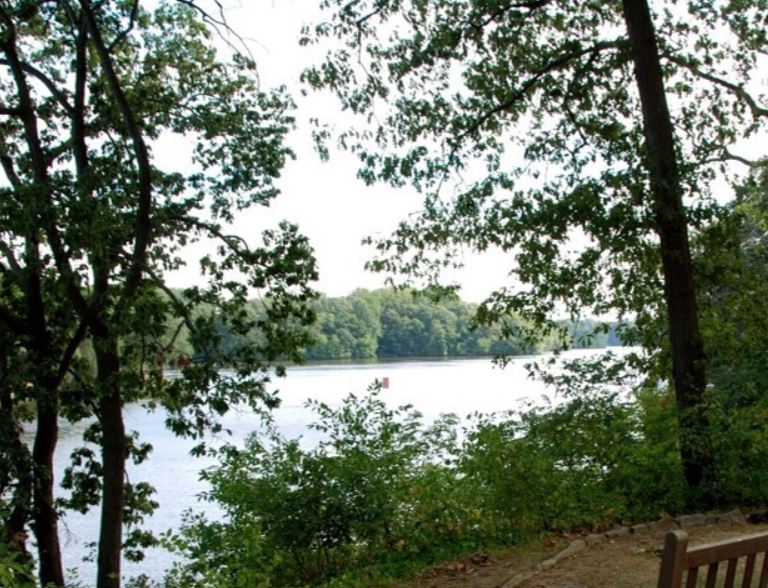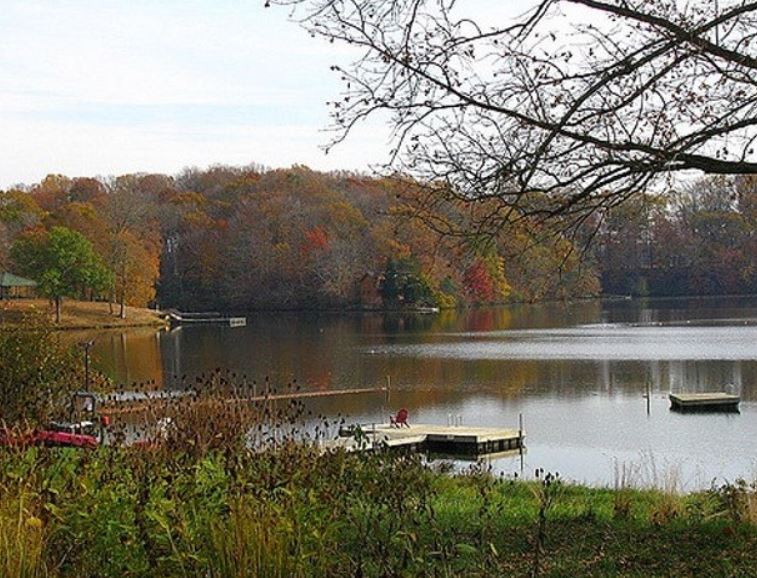Noxontown Pond covers approximately 158 acres near the headwaters of the Appoquinimink River watershed. This watershed contains three of the fastest developing municipalities in the state – Odessa, Townsend, and Middletown. While much of this watershed was historically agricultural, increased development has led to the conversion of farms into suburban residential communities. Less than 9% of the watershed remains forested and impervious cover continues to increase.
Stormwater runoff from agricultural and urban areas contributed NPS pollutants to Delaware’s Noxontown Pond, prompting DNREC to add the pond to the state’s 303(d) List for bacteria and nutrients. Watershed stakeholders provided technical assistance, installed agricultural BMPs, implemented low impact development designs and restored streambanks. Bacteria levels declined, and DNREC removed the Noxontown Pond segment from the state’s 303(d) List for bacteria.
 Monitoring data collected in the late-1990s indicated that Noxontown Pond failed to meet the state’s Enterococcus bacteria numeric criterion, 100 colony-forming units per 100 milliliters. The pond could not support its freshwater primary contact designated use, prompting the state in 1998 to add the pond to Delaware’s 303(d) List for bacteria and nutrients.
Monitoring data collected in the late-1990s indicated that Noxontown Pond failed to meet the state’s Enterococcus bacteria numeric criterion, 100 colony-forming units per 100 milliliters. The pond could not support its freshwater primary contact designated use, prompting the state in 1998 to add the pond to Delaware’s 303(d) List for bacteria and nutrients.
In 2003, the EPA developed a TMDL to address the nutrients and dissolved oxygen impairments throughout the Appoquinimink watershed, which includes Noxontown Pond. The TMDL requires a 60% reduction in nitrogen and phosphorus. In 2006, DNREC also developed a bacteria TMDL for the Appoquinimink watershed, which requires an 11–15% reduction in the NPS bacteria load in freshwater areas.
 The New Castle Conservation District offered technical assistance to the farming community by providing nutrient management planning and cost-share funding for agricultural BMPs.
The New Castle Conservation District offered technical assistance to the farming community by providing nutrient management planning and cost-share funding for agricultural BMPs.
Conservation Reserve Enhancement Program BMPs:
For more than 10 years, watershed partners have implemented water quality protection and restoration efforts in the Appoquinimink River watershed that have helped to reduce bacteria in surface waters. Water quality monitoring data collected from Noxontown Pond (station 109131) in 2002–2012 showed that the Enterococcus bacteria annual geometric means comply with the numeric criterion necessary to support the pond’s freshwater primary contact recreation designated use. On the basis of these data, DNREC removed Noxontown Pond from the state’s 303(d) List for bacteria. Data show that Noxontown Pond water quality continues to meet the bacteria water quality standard. The pond remains listed as impaired for nutrients.
Related Topics: conservation, nonpoint source, Noxontown Pond, story, success, water quality, watershed